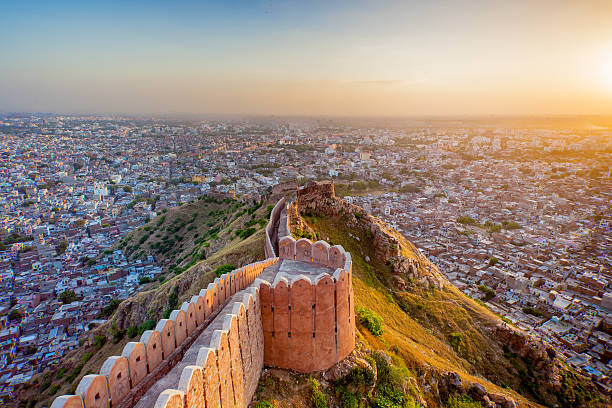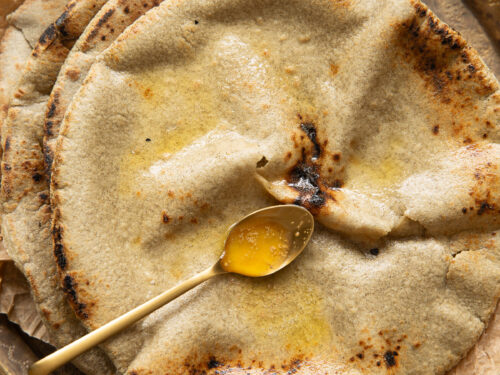Jaipur, the capital city of Rajasthan, India, is a mesmerizing destination that boasts a rich tapestry of history, culture, and architectural wonders. Known as the “Pink City” due to its distinct rose-colored buildings, Jaipur is a city that beckons travelers year-round. However, to make the most of your visit, it’s crucial to choose the right time to explore this vibrant city. In this ultimate guide, we’ll delve into the different seasons in Jaipur and help you decide when to plan your unforgettable journey.
1. Fall in Love with Jaipur in Winter
Without a doubt, winter is one of the most popular seasons for tourists to visit Jaipur. The period from October to March is characterized by cool, pleasant weather, making it ideal for sightseeing and outdoor activities. Here’s why you should consider visiting Jaipur during this time:
a. Comfortable Weather: The daytime temperatures during winter range from 15°C to 25°C (59°F to 77°F), providing a much-needed respite from the scorching Indian summer. The evenings can get cooler, so packing a light jacket is advisable.
b. Festivals Galore: Winter is the season when Jaipur comes alive with vibrant festivals. The famous Jaipur Literature Festival in January draws writers, intellectuals, and book lovers from around the world. Additionally, the Kite Festival in January and the Elephant Festival in March offer unique cultural experiences.
c. Explore Outdoor Attractions: With the pleasant weather, you can fully enjoy exploring Jaipur’s iconic attractions such as the Amer Fort, City Palace, Hawa Mahal, and Jantar Mantar. You can also embark on hot air balloon rides and camel safaris.
d. Cultural Extravaganza: Winter evenings in Jaipur are perfect for attending traditional performances, dance shows, and folk music events. Don’t miss the opportunity to savor Rajasthani cuisine at rooftop restaurants under the starry sky.

2. Monsoon Magic in Jaipur
Monsoon, which spans from July to September, is another intriguing time to visit Jaipur. While the rains can be unpredictable, the city takes on a special charm during this season:
a. Lush Greenery: The monsoon transforms the arid landscapes of Jaipur into a lush green paradise. The parks, gardens, and hills surrounding the city become a sight to behold.
b. Teej Festival: Celebrated with great fervor during the monsoon, the Teej festival is a spectacle to witness. Women dressed in colorful traditional attire, dancing, and processions make for a delightful experience.
c. Lower Prices and Fewer Crowds: Monsoon is considered the off-season for tourism in Jaipur. As a result, you can find lower hotel rates and fewer crowds at popular tourist spots, allowing for a more relaxed visit.
d. Photography Opportunities: The monsoon provides unique opportunities for photographers, with rain-soaked streets, vibrant umbrellas, and the city’s architecture reflecting in puddles.
3. Jaipur in Spring: A Colorful Retreat
Spring, from February to April, is a delightful time to visit Jaipur, especially if you love vibrant colors and pleasant weather. Here’s why spring is an excellent choice:
a. Floral Extravaganza: Jaipur’s gardens burst into bloom during spring, creating a riot of colors. The fragrant and colorful flowers make for stunning backdrops for your photographs.
b. Holi Festival: If you plan your visit around March, you can celebrate Holi, the festival of colors, with the locals. It’s a joyous occasion where people play with colored powders and water balloons, creating a lively atmosphere.
c. Mild Weather: Spring offers mild daytime temperatures ranging from 20°C to 30°C (68°F to 86°F), allowing you to explore the city comfortably without the scorching heat of summer.
d. Cultural Experiences: Spring is a great time to engage in cultural experiences like puppet shows, traditional dance performances, and art exhibitions.
4. Surviving the Jaipur Summer: Tips for Hot Weather Travelers
Summer in Jaipur, from April to June, can be incredibly hot, with temperatures soaring well above 40°C (104°F). While it might not be the most comfortable time to visit, it can still offer unique experiences if you’re prepared:
a. Early Morning Explorations: To beat the heat, plan your outdoor activities early in the morning or late in the afternoon. Sunrise and sunset views of forts and palaces can be breathtaking.
b. Stay Hydrated: The scorching sun can be unforgiving, so make sure to carry a water bottle and stay hydrated throughout the day.
c. Indoor Attractions: Utilize the hottest part of the day to explore indoor attractions like museums, art galleries, and shopping arcades.
d. Festival of Lights: If your trip coincides with Diwali (usually in October or November), you’ll witness Jaipur illuminated with millions of colorful lights, creating a magical atmosphere.
5. Off-Season Jaipur: Exploring the City on a Budget
If you’re a budget-conscious traveler, consider visiting Jaipur during the off-season, typically from June to September. While it’s undoubtedly hot, there are advantages to exploring Jaipur during this time:
a. Budget-Friendly Accommodation: You’ll find significantly lower hotel rates during the off-season, allowing you to stretch your budget further.
b. Quieter Attractions: With fewer tourists around, you can explore popular attractions without the usual crowds, making for a more relaxed visit.
c. Monsoon Discounts: Some businesses offer monsoon discounts on tours, activities, and dining, making it an even more budget-friendly choice.
d. Enjoying Indoor Attractions: The off-season is perfect for exploring indoor attractions like museums, palaces, and historic sites while staying cool and dry.
6. Jaipur’s Festival Calendar: Timing Your Visit for Cultural Delights
If you’re particularly interested in experiencing the rich culture and traditions of Jaipur, consider planning your visit around one of the city’s many festivals:
a. Diwali: The Festival of Lights, usually in October or November, illuminates the city with lamps, candles, and fireworks, creating a breathtaking spectacle.
b. Teej Festival: Celebrated during the monsoon season, Teej is a women’s festival with processions, dancing, and vibrant celebrations.
c. Gangaur Festival: In March or April, the Gangaur Festival is dedicated to the goddess Parvati and includes a grand procession of beautifully adorned idols.
d. Elephant Festival: Held during Holi, this festival showcases a parade of beautifully decorated elephants, along with traditional performances.
e. Jaipur Literature Festival: In January, this renowned festival brings together literary giants, thinkers, and artists from around the world for a celebration of literature and ideas.
7. Jaipur’s Weather: A Season-by-Season Breakdown
Understanding the weather in Jaipur during different seasons is essential for planning your trip:
a. Winter (October to March): Pleasant with temperatures ranging from 15°C to 25°C (59°F to 77°F).
b. Monsoon (July to September): Humid with occasional heavy rains.
c. Spring (February to April
): Mild with temperatures ranging from 20°C to 30°C (68°F to 86°F).
d. Summer (April to June): Extremely hot with temperatures well above 40°C (104°F).
e. Off-Season (June to September): Hot and humid with the possibility of heavy rainfall.
8. Plan Your Jaipur Visit Wisely
In conclusion, the best time to visit Jaipur depends on your preferences and interests. Each season offers a unique experience, from the pleasant winters to the vibrant monsoon and the colorful spring. Summers are best for early morning explorations, and the off-season can be a budget-friendly choice. Consider the festivals and your tolerance for heat when deciding on your travel dates. Regardless of when you visit, Jaipur’s rich culture, history, and architectural wonders await, promising an unforgettable journey into the heart of Rajasthan. But as per my experience, October – March (11°C to 32°C): Blessed with pleasant breezes and moderate sunlight, the duration of October to March is the best time to visit Jaipur.
So, when will you embark on your Jaipur adventure? Choose the season that resonates with your travel style, and let the “Pink City” captivate your heart with its timeless beauty.




